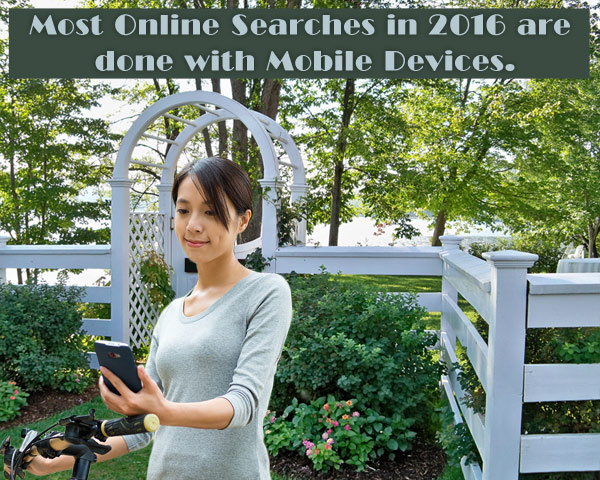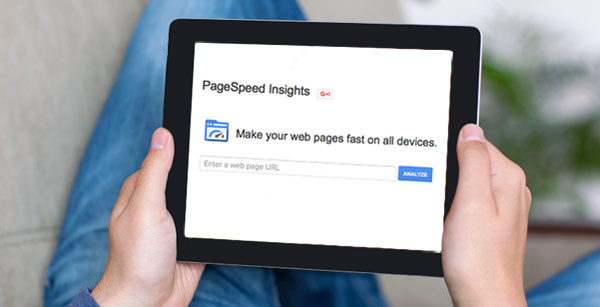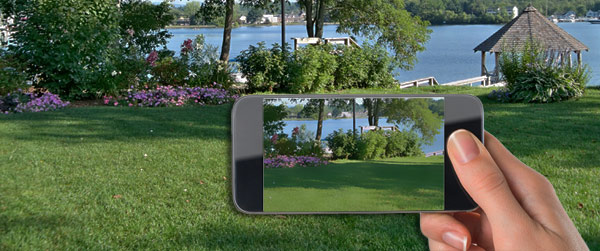Technology is changing the way consumers find small businesses. Yet despite the fact that over 80% of American adults are now on the web and two-thirds of them are using social networking sites, nearly half of small businesses still don’t have a website.
But these days it’s almost impossible to market a business effectively with offline strategies only. Small businesses without both a mobile-friendly website and a social media presence in 2016 are at a competitive disadvantage.

Web design companies are under especially intense pressure (even more so than the average small business) to stay at the forefront of web, social media and technology trends. What was considered good practice 5 years ago is often obsolete today.
Let’s take a peek at 10 websites. They belong to popular web design companies in New Hampshire. How are they keeping up with the demands of the mobile-device oriented, social media savvy consumers of today? Let’s find out.
-
Mobile Friendliness
Seeing people out and about with cell phones at football games and along lakefront trails is the norm in New Hampshire now, not the exception. They’re often checking their phones, looking for businesses online.
Did you know?
- most people search the Internet first before they call or visit a business
- most online searches in 2016 are done with mobile devices

Mini Website Study Results: Part 1
Surprisingly, though, out of the 10 websites examined in our mini study, 2 of them did not have responsive mobile-friendly designs. Over time, those 2 web design companies are going to feel more and more pressure from Google and other search engines to convert to mobile-friendly designs.
How will Google apply this pressure? Google is now catering to mobile device users, helping them to avoid “online search frustration.” It is blocking non-responsive websites from searches done on mobile devices (mobile search). In other words, the 2 unresponsive web design companies will essentially be invisible on mobile search. And that’s just the beginning. Websites with text that is too small to read and links that are too close together will not rank well in Google’s mobile search either.
If you’re concerned about whether or not your website is becoming invisible in mobile searches, you can enter your web page URL into the search field at Google’s mobile friendly test.
If your website passes the mobile-friendly test, that is great news, but there’s another search trend emerging and picking up steam.
The increasingly popular technology is called “Voice Search.”
What is Voice Search? Rather than typing words into a search bar, people are searching online by speaking out loud to their smartphones and asking a question. With “voice search,” they don’t ask concise questions. They speak in a more conversational way with “who, what, where, why and how” questions. “Voice search” is gaining popularity because it is easier to do on-the-go than typing keywords into a phone. In addition, almost all mobile devices in 2016 have a voice search function. Meanwhile, search engines are making great strides in interpreting these types of searches. The most common question on “voice search” right now is to ask for directions. So if you have a business with a physical location, make sure your website can answer that question.
-
The Hamburger Menu
![]() Web designers are now frequently using the “hamburger menu” in their mobile-friendly websites.
Web designers are now frequently using the “hamburger menu” in their mobile-friendly websites.
What is a Hamburg Menu? A “hamburger menu” displays the navigation menu when users actively click on its icon (A small three-bar icon tucked in the corner of a website). You’ve probably seen it. Most people are familiar with the symbol these days.
Mini Website Study Results: Part 2
Let’s check out the websites in our mini study. Out of the 10 NH web design businesses, half are utilizing the “hamburg menu” for visitors viewing their websites on small screens. The two non-responsive websites obviously did not, since they are not catering to mobile-device users. But for the rest, the “hamburg menu” was a popular feature.
-
Social Media Icons
Did you know?
- 70% of the U.S. population now has at least one social networking profile, according to Statistica.
- The percentage of U.S. small businesses that use Facebook is 41%, according to Expanded Ramblings.
 It’s clear that Facebook and other social media sites can help businesses not only reach potential customers, but also interact with them online. Social media can also have a positive impact on a website’s search engine rankings and visibility.
It’s clear that Facebook and other social media sites can help businesses not only reach potential customers, but also interact with them online. Social media can also have a positive impact on a website’s search engine rankings and visibility.
But it’s not easy to run a business and keep up with social media. The pressure on web design companies to be active on social media is particularly intense.
Mini Website Study Results: Part 3
Are you curious about how the 10 web design companies’ engagement with social media? Which social media platform do you think is the most popular among these N.H. businesses? If you guessed Facebook, you are correct.
Let’s look at the results.
- 10 out of 10 companies had social media icons in their websites. These icons linked to their social platforms.
- Facebook icon = 10 out of 10
- Twitter icon = 8 out of 10
- LinkedIn icon = 7 out of 10
- Google+ icon = 3 out of 10
- Pinterest icon = 1 out of 10
- Snapchat icon = 1 out of 10
Keep in mind, though, the presence of social media icons on a website and active participation in social media are two very different things. Out of the 10 websites examined, some of the social media icons led to profiles with updates that were over 2 years old. At the same time, though, Facebook was the clear winner as the most popular social media platform among these companies.
-
Parallax Designs
What is a Parallax Design? A parallax design provides a multi-layered effect when a visitor scrolls down a page in a website (creating an illusion of 3D motion and depth). Because the scrolling action is seamless, visitors are likely to scroll down to the bottom of a long page (if the content is engaging and visually-appealing).

In the past, web designers used to keep important content “above the fold” since most people were using desktop computers. “Above the fold” content is positioned in the upper half of a web page and is visible without any scrolling. But, things have changed, thanks to mobile devices. People are now accustomed to long scrolls and can easily swipe down through parallax designs.
Mini Website Study Results: Part 4
There were several parallax designs and long scrolling home pages in the group of 10 websites studied. The 2 N.H. websites with the parallax designs were visually appealing and engaging.
On the downside, though, the parallax designs examined in the group of ten were the slowest in terms of page speed (time to load). A faster page speed is better because pages with longer load times tend to have higher bounce rates. Website visitors are an impatient group. They hate to wait. They will bounce back to the search results page they came from and then go somewhere else.
Catering to those impatient website visitors, Google has developed a tool called “PageSpeed Insights” which measures the performance of a page for mobile and desktop devices. The PageSpeed Score ranges from 0 to 100 points. If your website does well in Google’s mobile-friendly test and in PageSpeed Insights, you can pat yourself on the back… or thank your web designer.

-
Blogs
Blogs have come a long way since the first one was posted in 1994. Today more small businesses are adding blogs to their websites. Blog posts are also getting longer, on average. Today it’s not uncommon to find blog posts that are 2,000 words or more.
You’ve probably already guessed that Google and other search engines are favoring in-depth well-written, well-researched content over short blog posts in 2016.
Blog posts, today, tend to also have more images, infographics and videos, yet are receiving fewer and fewer comments. Why? Blog readers are leaving fewer comments on a blog posts themselves, and instead responding to those blog posts on social media sites like Facebook and Twitter.
Mini Website Study Results: Part 5
Let’s take a look at the 10 N.H. web design companies we’ve been studying to see the value they place on blogging. Are they finding it worth the time and effort?
Would you believe that only 5 out of 10 of these companies included blogs in their websites and 2 of those blogs hadn’t been updated since 2013. This was the most surprising finding of this mini study.
Perhaps companies are blogging less (or not at all) because there are more options for content publishing in 2016 than ever before. Long-form content publishing is taking off in places such as LinkedIn Pulse and Facebook Notes.
![]()
What Is Facebook Notes? Facebook Notes essentially allows you to ‘blog’ within the Facebook platform itself. Think of Notes as Facebook’s version of LinkedIn’s Pulse which began in 2014. Facebook Notes has been around since 2006 but Facebook updated it in 2015, making it more customizable and simpler to use.
Long-form content is becoming popular on social media sites. Will this type of publishing complement or replace blogs as we know them? It is hard to tell.
The results of this mini website study show that the companies studied, on average, placed a great importance on having a mobile-friendly website. Parallax designs and hamburger menus were also popular. Facebook was the clear winner among social media platforms, while blogs were not highly regarded across the board.
It is clear to see that technology advances are changing the way consumers find small businesses. At the same time, Google and other search engines are increasing the likelihood that small businesses with mobile-friendly sites and an active social presence will beat out their competitors. These businesses will succeed by offering a better website experience for visitors, whether they’re searching online at a desktop computer in a downtown Concord office, using an iPad along the Hampton Beach boardwalk or a smartphone on the shores of Lake Winnipesaukee.


Return to Top